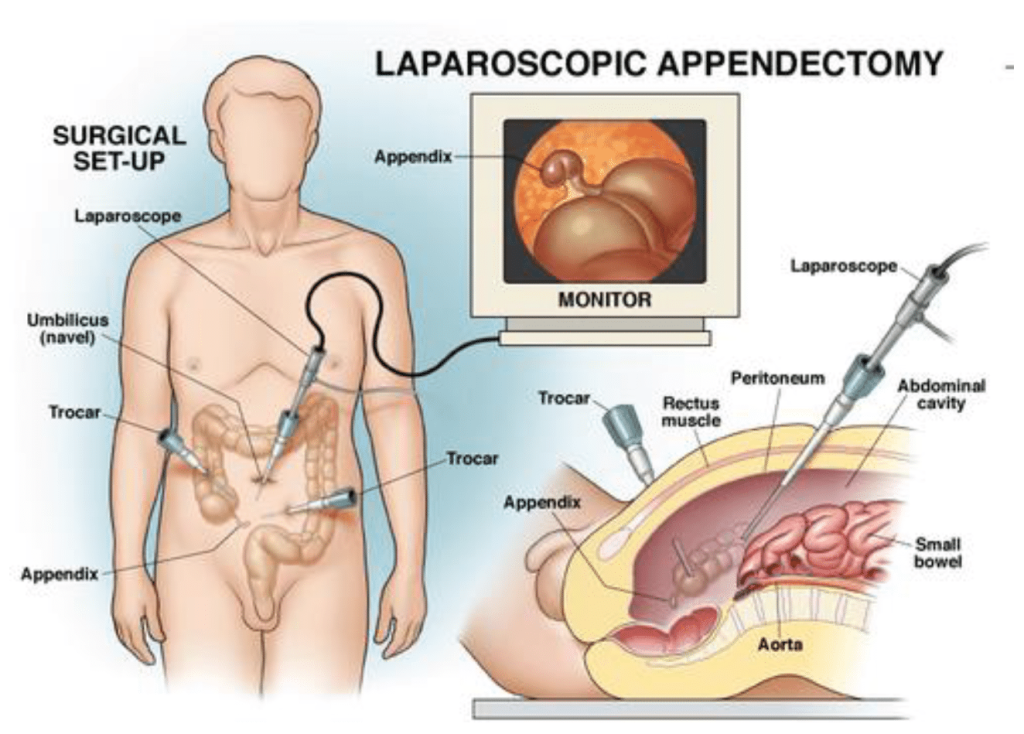Appendectomy is a surgical procedure performed to remove the appendix, a small, finger-shaped organ located at the junction of the small and large intestines in the lower right side of the abdomen. This surgical intervention is most commonly employed in cases of appendicitis, an inflammation of the appendix usually caused by obstruction of its lumen.

The procedure is typically conducted under general anesthesia to ensure the patient remains unconscious and pain-free throughout the surgery. Surgeons can choose between two main approaches: open appendectomy and laparoscopic appendectomy.
In an open appendectomy, a small incision is made in the lower right side of the abdomen, allowing the surgeon direct access to the inflamed appendix. The appendix is then carefully removed, and the incision is closed with stitches or staples.
Laparoscopic appendectomy, on the other hand, involves making several small incisions through which a laparoscope (a thin, flexible tube with a camera) and other surgical instruments are inserted. The surgeon views the internal structures on a monitor and removes the appendix using specialized tools. This minimally invasive approach often results in shorter recovery times, less postoperative pain, and smaller scars compared to open surgery.
Appendectomy is a common and generally safe procedure, but prompt intervention is crucial in cases of appendicitis to prevent the appendix from rupturing, which can lead to serious complications. With advancements in surgical techniques and technology, appendectomy has become a routine and well-established procedure, providing relief to individuals experiencing the symptoms of appendicitis and helping to prevent further health complications. As with any surgery, potential risks and benefits should be thoroughly discussed between the patient and their healthcare provider before undergoing an appendectomy.
